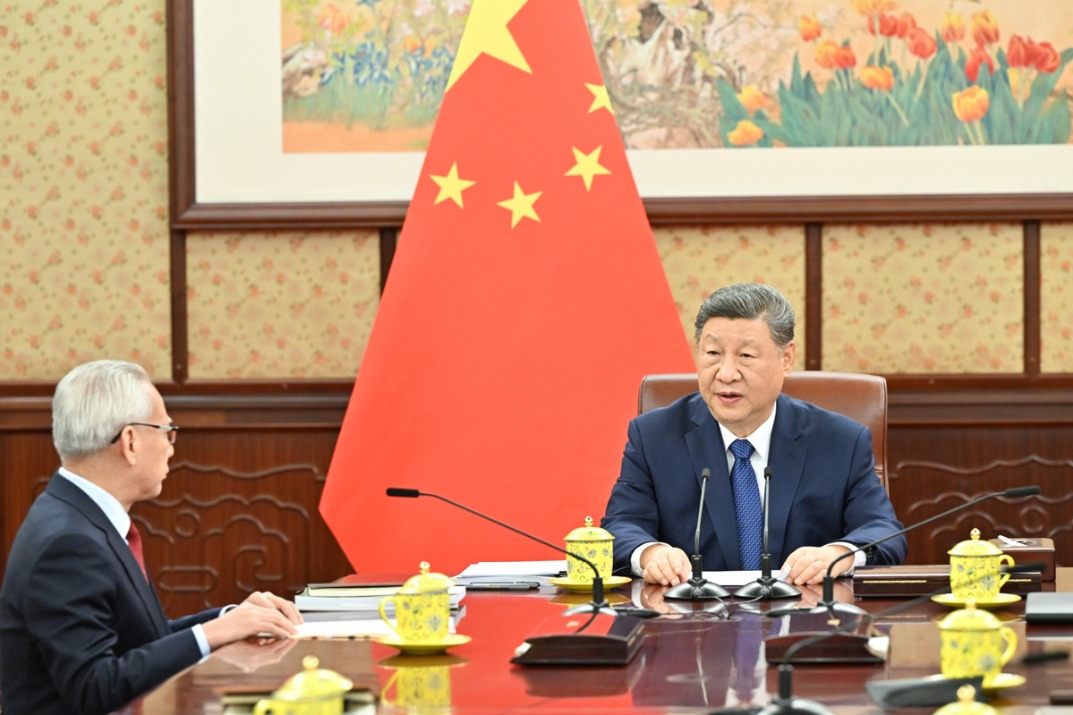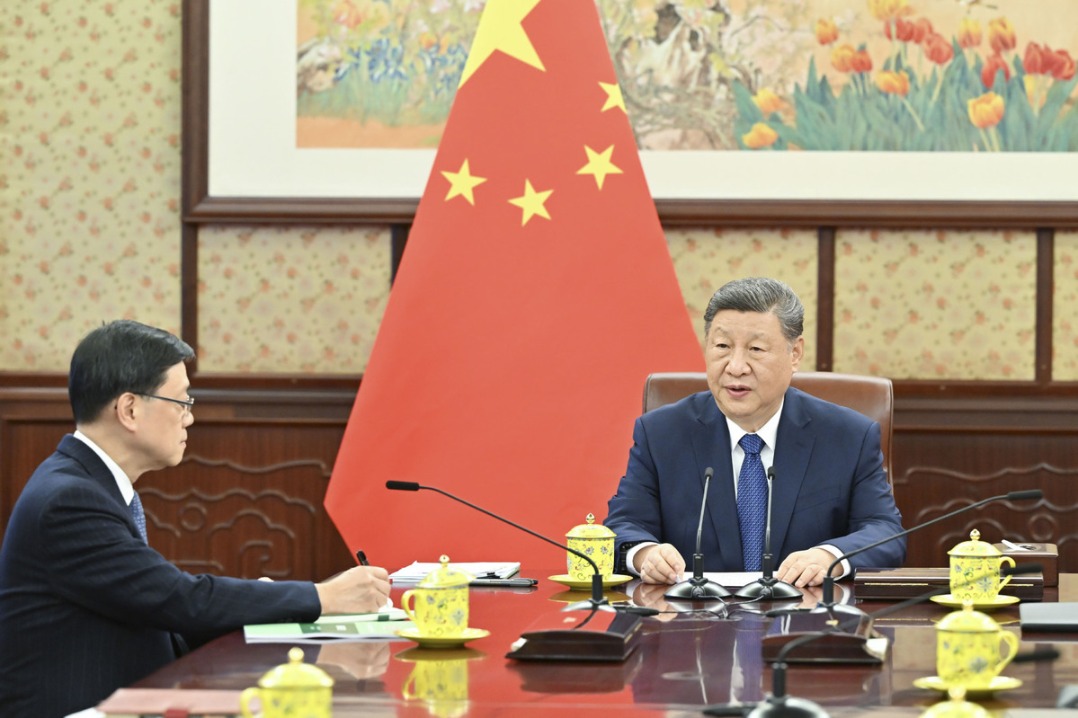Asian philosophy
An exhibition spotlights abstract works by a former business tycoon and an established artist, Zhang Kun reports in Shanghai.

An ongoing exhibition at Long Museum West Bund in Shanghai has brought in lots of visitors from the financial and business sectors.
Audiences are curious about the artistic turn of Tang Shuangning, a retired financial executive and former president of China Everbright Group.
The exhibition that runs through Jan 12 features abstract paintings by Tang and another artist, Li Geng, who's the son of master painter, Li Keran (1907-89).
More than 50 paintings at the show belong to the collection of the Li Keran Art Museum in Beijing, where Li Geng serves as the executive director.
Tang says: "I'm an amateur artist. I paint and do calligraphy as a hobby since my retirement.
"I would have been a street artist if not for Li's trust, support... and the great platform he gave me for creation."
Li Keran was one of the most important Chinese artists of the 20th century. His son was born in 1950. Li Geng started to learn painting as a child from his father and other contemporary masters. He has grown into an international award-winning artist, recognized for his combination of Chinese aesthetics with Western creative methods.
"Li Geng's paintings are one of the contemporary paradigms of communication between China and the West," says Xie Xiaodong, curator of the exhibition.
"He is a scholarly artist with both traditional accomplishments and an international perspective. His ink paintings are diverse and full of charm. For many years, he has been striving to develop the intercultural dialogue of ink painting and portray the contemporary transformation of China."
On exhibition at Long Museum in Shanghai hosts a series by Li Geng named Mahler Symphony-Ink Space.
Xie points out that while the works interpret the magnificence of Mahler's music, they're full of classical Chinese poetry.
"The melodies and rhythms of music are expressed in the hues and strokes of painting," Xie says.
He praises Li Geng's exploration of the ultimate connection between music and painting, and how they nourish the human spirit in the contemporary world.
Tang, however, didn't turn to artistic creation until he retired in 2017. The 65-year-old's artworks have been shown at home and abroad, including at such important international exhibitions as the 58th Venice Biennale.
"His philosophical ideas and poetic emotions that'd accumulated and were suppressed for more than 40 years burst from his paintbrush," Li Geng says about Tang.
"He created with great passion and power."
He believes Tang is a genius, whose abstract paintings contain music and poetry. These large works are created with saturated colors on collaged rice paper. Some are more than 8 meters long and 2 meters high.
"I don't believe abstract art belongs solely to Western artists," Tang says.
In China, abstract art grew from calligraphy and traditional free-stroke ink painting, he says.
"It is rooted in Chinese culture and deeply connected to such Chinese philosophies as Confucianism, Taoism and Buddhism."
Tang calls for establishing a contemporary abstract methodology and philosophy of the East.
The abstract art of the East features the flow of qi, or life force, with lots of empty spaces in the compositions that present the essence of Eastern philosophy, he says.



Today's Top News
- Crossing a milestone in the journey called Sinology
- China-Russia media forum held in Beijing
- Where mobility will drive China and the West
- HK community strongly supports Lai's conviction
- Japan paying high price for PM's rhetoric
- Japan's move to mislead public firmly opposed






























